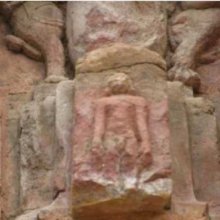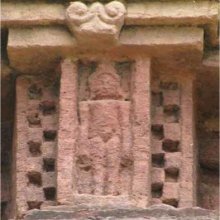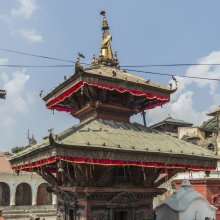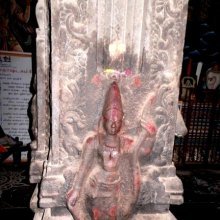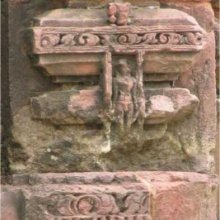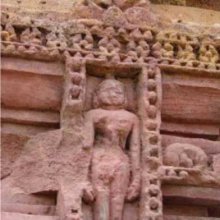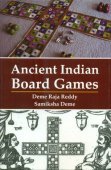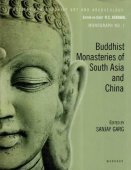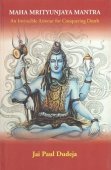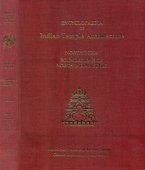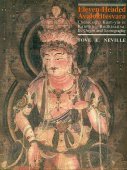Temple: 5 definitions
Introduction:
Temple means something in Hinduism, Sanskrit, the history of ancient India. If you want to know the exact meaning, history, etymology or English translation of this term then check out the descriptions on this page. Add your comment or reference to a book if you want to contribute to this summary article.
Images (photo gallery)
(+1883 more images available)
In Hinduism
Shilpashastra (iconography)
Source: Shodhganga: Elements of Art and Architecture in the Trtiyakhanda of the Visnudharmottarapurana (shilpa)Temples in ancient Indian Painting (citra) are associated with Cities, according to the Viṣṇudharmottarapurāṇa, an ancient Sanskrit text which (being encyclopedic in nature) deals with a variety of cultural topics such as arts, architecture, music, grammar and astronomy.—In the context of identification of some particular places through picture, the Viṣṇudharmottarapurāṇa gives some instructions. According to this book, a city should be represented in a picture with various temples, mansions, markets, residences and royal roads. The lofty temples, huge mansions, markets, specious market roads etc. of the city of Ujjayinī as stated in the Kādambarī be a model for a picture of a well designed city.

Shilpashastra (शिल्पशास्त्र, śilpaśāstra) represents the ancient Indian science (shastra) of creative arts (shilpa) such as sculpture, iconography and painting. Closely related to Vastushastra (architecture), they often share the same literature.
India history and geography
Source: Shodhganga: The significance of the mūla-beras (history)Temples played a significant role in the life of the Tamils and occupied a central place in their lives. They served as places of worship, divine experience, entertainment, aesthetic relish, social togetherness, as well as home for artistes in the fields of sculpture, painting, music, dance and philosophy. A Hindu temple is one of the means to attain mokṣa (release). The Hindu temple is a monument with elaborate sculptures and wide circumnutating passages, with other deities placed around the chief deity.
In ancient days, a group of artists resided in the temple. The architects, the sthapatis (sculptors), the devadāsīs (dancers), the musicians, the pūcārīs (priests), the kavīs (poets), the jewelers, the garland makers, and a large number of attendants were part of the temple and its precincts. Day and night they were engaged in serving god and they experienced divinity in doing so. Each person was an expert in his/her own field. In the presence of the Divine the devotee surrendered his/her ego and professional pride and became a humble servant of god. The temple was a common platform which brought all classes of people–priests as well as menial functionaries in the temple to act in perfect unison.
Source: Singhi Jain Series: Ratnaprabha-suri’s Kuvalayamala-katha (history)Temples (of deities of different religions) were prevalent in ancient India, as depicted in the Kathās (narrative poems) such as Uddyotanasūri in his 8th-century Kuvalayamālā (a Prakrit Campū, similar to Kāvya poetry).—Page 82.30: Here is a list of religious establishments of different denominations as mantra-jāpa-maṇḍapa, brāhmaṇa-śālā, rudra-bhavana, dhārmika-maṭha, Home of Kāpālikas, Holy platforms of Yakṣas, Nāgas etc., Brahmanical songs were sung in āvasati, Jinagṛha, Buddhavihāra or Buddhist monasteries, Shrine of goddess Kottavī, Temple of six-headed god Kārttikeya and temple of other deities.
Source: Shodhganga: Elements of Art and Architecture in the Trtiyakhanda of the Visnudharmottarapurana (history)The Temple is a place where the devotees can get the environment to connect themselves with their lords. The Hindu temple consists of all the cosmic elements from fire to water, images of nature to deities, Gods remain feminine to masculine, kāma to artha, fleeting sounds and incense smells etc. by which one can celebrate life. [...] From the ancient time the art of temple building has been developing in almost all the regions of India. The different architectural techniques of temple building in different regions are the result of geographical, climatic, ethnic, cultural, national and historical diversities.
Source: Yale Journal of Music & Religion: Ritual Music in Contemporary Brahmanical Tantric Temples of KeralaThe Temple is a replica of the Human Body and the five enclosures (pañcaprākāras) represent the five sheaths (pañcakośa) that constitute it. They are the physical sheath (annamaya-kośa), the vital body sheath (prāṇamaya-kośa), the mental sheath (manomaya-kośa), the intellectual sheath (vijñānamaya-kośa), and the bliss sheath (anandamaya-kośa). These five sheaths represent the physical body of the deity on the horizontal plane.
Another category of correspondences between the Temple and the Human Body (according to texts and performers) is established on the vertical plane, and in this case it relates to the so-called energetic centers (cakras) situated along the internal channel (susumnā) in the spine. They are mūlādhāra, svādhiṣthāna, manipūra, anāhata, viṣuddha, and ājnā. At the base of the channel, imagined as a coiled serpent in the lowest of the Cakras (mūlādhāra), Kuṇḍalinī, the feminine life force or Śakti, is thought to reside. At the opposite end, above the six power centers, the thousand-petaled lotus (sahasrāra-cakra) is the abode of Śiva.
Thus, the temple is considered as the body of a human being whose soul (ātma) is represented by the idol in the śrīkōvil, and the aim of the rituals is to keep this “being” not only alive, but in a constant state of enlightenment. Indeed, the concept implicit in this vision is that in attaining enlightenment a man, a yogi, becomes a deity, since enlightenment is a permanent quality of gods and irradiates, benefiting not only the devotees visiting the temple but the entire society.

The history of India traces the identification of countries, villages, towns and other regions of India, as well as mythology, zoology, royal dynasties, rulers, tribes, local festivities and traditions and regional languages. Ancient India enjoyed religious freedom and encourages the path of Dharma, a concept common to Buddhism, Hinduism, and Jainism.
See also (Relevant definitions)
Starts with: Temple architecture, Temple building, Temple flower, Temple part, Temple plant, Temple tree, Temple worship.
Ends with: Dashavatara Temple, Hindu Temple, Kailasanathar Temple, Seicho-ji Temple, Shiva Temple, South Indian temple, Sun temple.
Full-text (+5968): Mandapa, Prasada, Vimana, Devakula, Shikhara, Shankha, Shivalaya, Devalaya, Mandira, Hindu Temple, Garbhagriha, Gajadana, Devagriha, Devadasi, Kailasa, Bhadra, Vishala, Sunda, Nishadha, Sindhu.
Relevant text
Search found 313 books and stories containing Temple; (plurals include: Temples). You can also click to the full overview containing English textual excerpts. Below are direct links for the most relevant articles:
Pallava period (Social and Cultural History) (by S. Krishnamurthy)
Sources for Study < [Chapter 1 - Introduction]
Structural Temples and Sculptures (of the Pallava period) < [Chapter 2 - Origin of Sculptural Art—Its Development and Scheme]
Dancing girls in temples < [Chapter 3 - Socio-Religious Life]
Vishnudharmottara Purana (Art and Architecture) (by Bhagyashree Sarma)
4. The Viṣṇudharmottara-purāṇa and Temple Architecture of India < [Chapter 6 - Modern Relevance of Different Art Forms and Architecture]
6. Different Types of Temple < [Chapter 4 - Temple Building]
8. Characteristic Features of Sarvatobhadra Temple < [Chapter 4 - Temple Building]
Temples of Munnur (Historical Study) (by R. Muthuraman)
Present Day Administration < [Chapter 7]
Temples as an Employer < [Chapter 2]
Introduction: Architecture of the Temple < [Chapter 4]
Temples in and around Madurantakam (by B. Mekala)
Economic Activities < [Chapter 6 - Social and Economic Activities]
Gati in Theory and Practice (by Dr. Sujatha Mohan)
Dance movements found in sculptures < [Chapter 4 - Practice of Gati]
Temples as seat of learning < [Chapter 4 - Practice of Gati]
Practice of dance forms in temples < [Chapter 4 - Practice of Gati]
Early Chola Temples (by S. R. Balasubrahmanyam)
*Temples of the Age of Sundara Chola* < [Chapter X - Historical Survey]
Temples in Turaiyur < [Chapter X - Historical Survey]
Related products
(+14 more products available)
